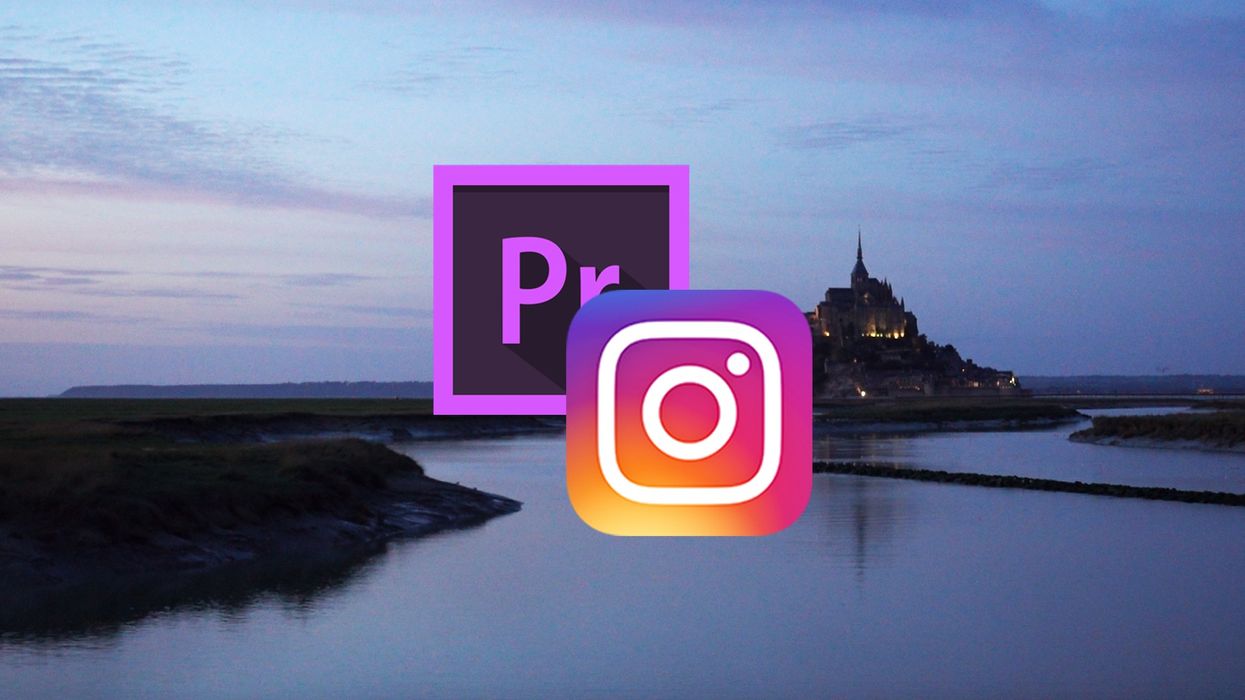How to Edit Video for Instagram in Premiere Pro
Up your Instagram game in Premiere Pro with these tips.

In this tutorial, we’re going to take a closer look at how to properly work with Adobe Premiere Pro footage that’s destined for Instagram. If you're interested in some other editing tips and tricks though, be sure to check out our guide on How to Use the New Adobe Fonts in Premiere Pro and How to Create Comic Book Style Speech Bubbles in After Effects. (Plus these 5 Most Helpful Premiere Pro Editing Workflow Tutorials.)
I suggest that you bookmark this page, as you’ll want to refer back to this information often. Let's get started.
The Platforms
When publishing to Instagram, you have a number of options regarding platforms. These include the main feed, Stories, and the newly released Instagram TV. Each platform has its own tech specs which often lead to confusion for editors. One of the main points of confusion is the number of possible aspect ratios you can use when exporting for Instagram. These include landscape 16:9 for horizontal video, 4:5 and 9:16 for vertical video, and 1:1 for square. Here’s a closer look at the aspect ratio and video length requirements of each particular platform.
Instagram Feed
1-60 seconds in length
- 16:9 (horizontal)
- 1:1 (square)
- 4:5 (vertical)
Instagram Stories
1-60 seconds in length
- 16:9 (horizontal)
- 1:1 (square)
- 4:5 (vertical)
- 9:16 (vertical)
Instagram TV (IGTV)
15 seconds-10 minutes in length (up to 60 minutes for larger accounts)
- 4:5 (vertical)
- 9:16 (vertical)
Create Sequence Presets
If you’re regularly publishing to Instagram, it makes sense to create Instagram-friendly sequences for these platforms in Adobe Premiere Pro. To reuse these sequences over and over again, you can save them out as sequence presets. First, go to File > New > Sequence. In the New Sequence dialog box, click on the Settings tab. Here’s where you can type in the custom specs to match the desired platform. Since I’m working with 1920x1080 source footage, the resolutions listed below will work best for each corresponding aspect ratio—
- 1:1 - 1080x1080
- 4:5 - 864x1080
- 9:16 - 900x1600
Once I’m happy with the specifications, I will click on the Save Preset button and then I can add a name and description. I need to repeat this process for each aspect ratio. I can now find the presets under the Custom folder in the Sequence Presets tab.
Use Export Presets
Creating custom sequence presets and using them to edit specifically for Instagram can take a lot of extra time. This is a luxury that many editors just don't have. If you fall under this category, don't worry. You can format everything in export settings, and then create presets to automate your exports. First, I’ll go to File > Export > Media to open up the Export Settings dialog box. Using the settings below, I'll create presets for each aspect ratio.
- Format - H.264
- Width/Height - Just as with the sequence presets, match the resolution to the desired aspect ratio.
- Frame Rate - 30fps
- Field Order - Progressive
- Aspect - Square Pixels
- Bitrate Encoding - VBR 1 - Pass
- Target Bitrate - 8Mbps (Adjust this to change quality vs file size.)
Be aware that these specifications are not the only thing that will work on Instagram. Think of them more like guidelines. For example, H.264 isn't the only format that works on Instagram, but it is the one that they prefer. Also, you can make adjustments to the bitrate encoding and target bitrate to change the size and quality of your files. If your file doesn't look good on Instagram (or just plain isn't working), play with these settings. Also, pay attention to the length requirements I mentioned in the first section for each platform.
Position Video with Overlays
One of the downsides of using custom export presets is that you can’t perfectly position your content like you can with sequence presets. To get around this, I use color mattes to create custom overlays. First I’ll go to File > New > Color Matte. I’ll select a nice bright color and then type in a custom width and height matching one of the Instagram platforms. I'll go with 900x1600 for Instagram Stories.
Once created, I can overlay the color matte on my sequence and then bring the opacity down to make it transparent. I need to be sure to right click and select Scale to Frame Size. Now I can quickly position the video content underneath, which will again help me save time by not creating custom Instagram-friendly sequences. I give away overlays and guides on my website, which you can get by subscribing to my newsletter here.











